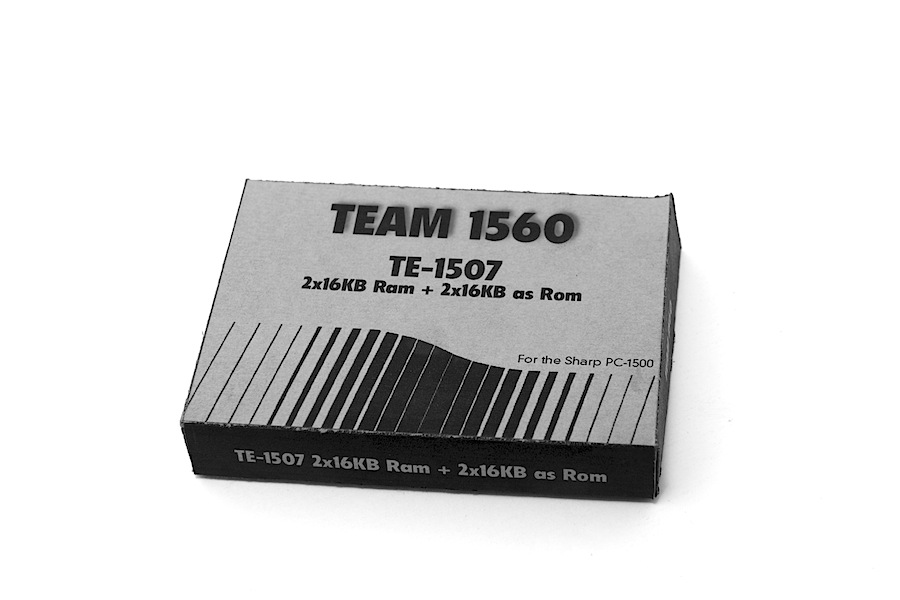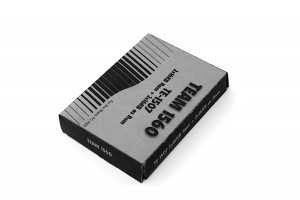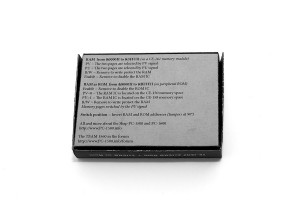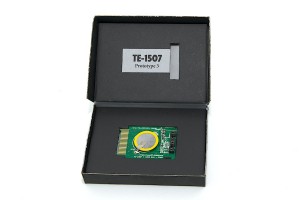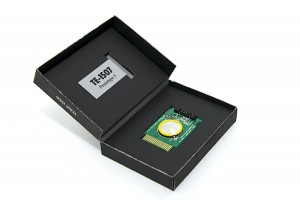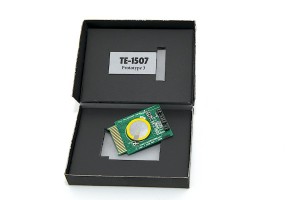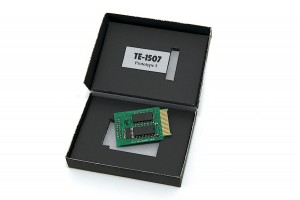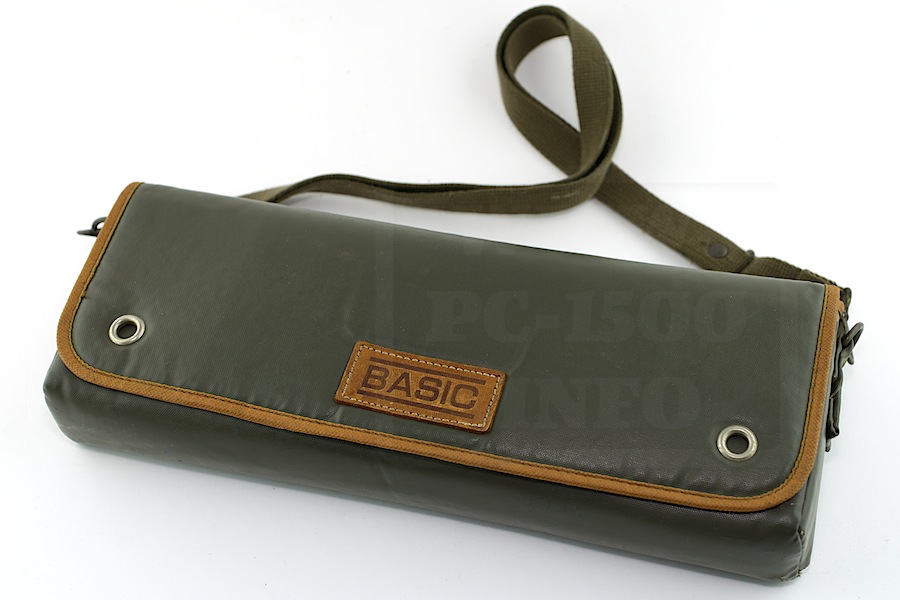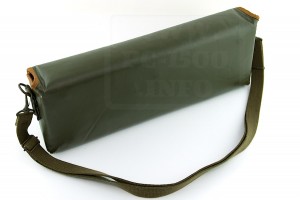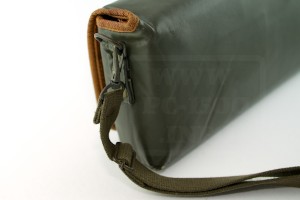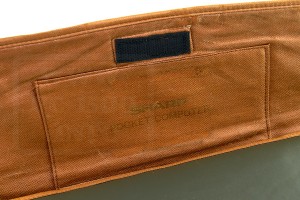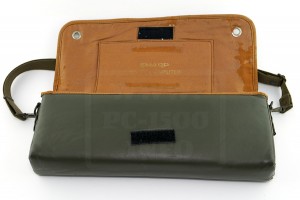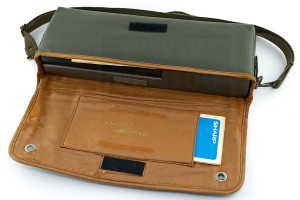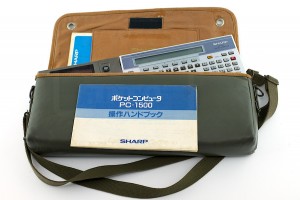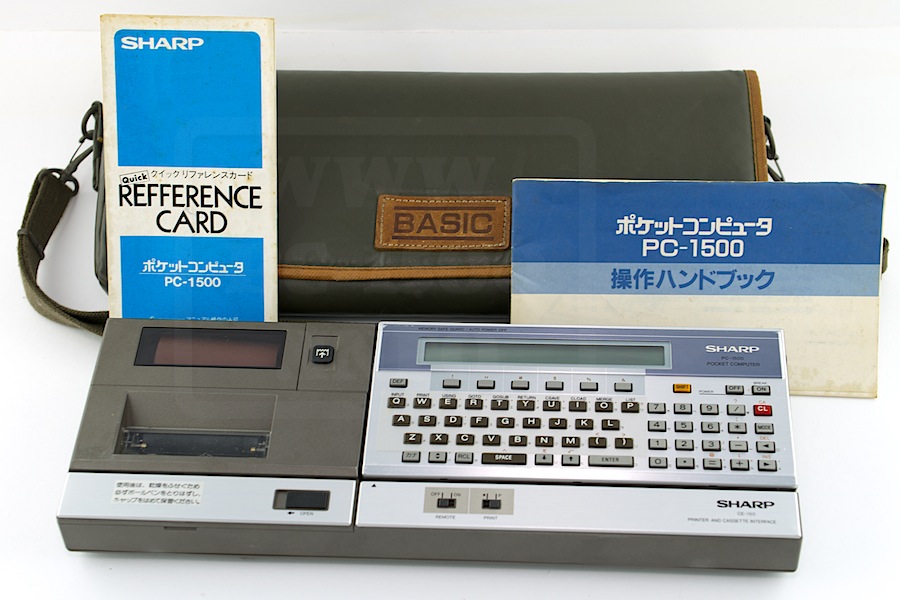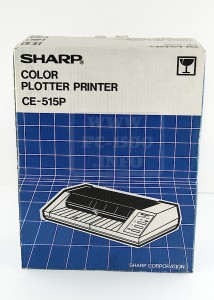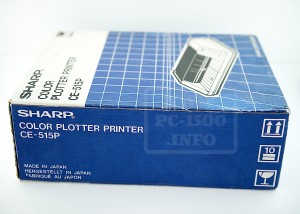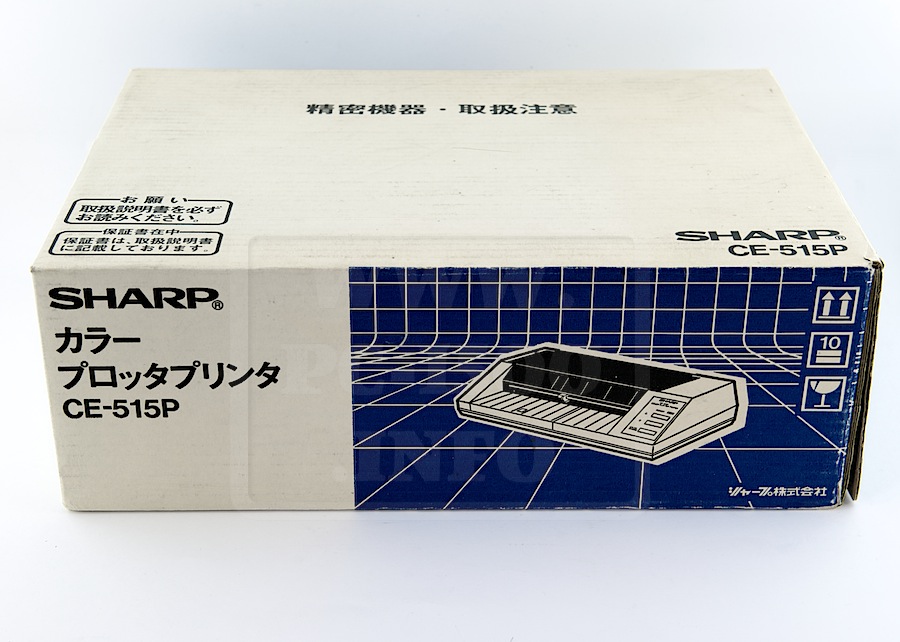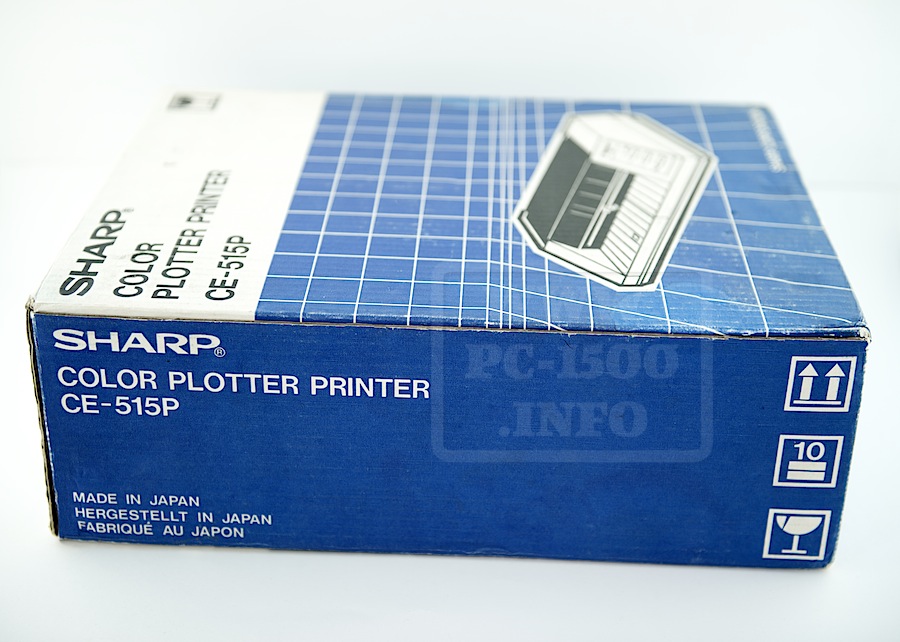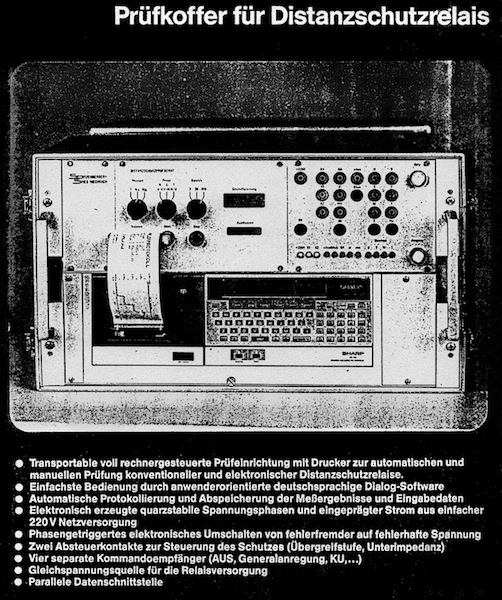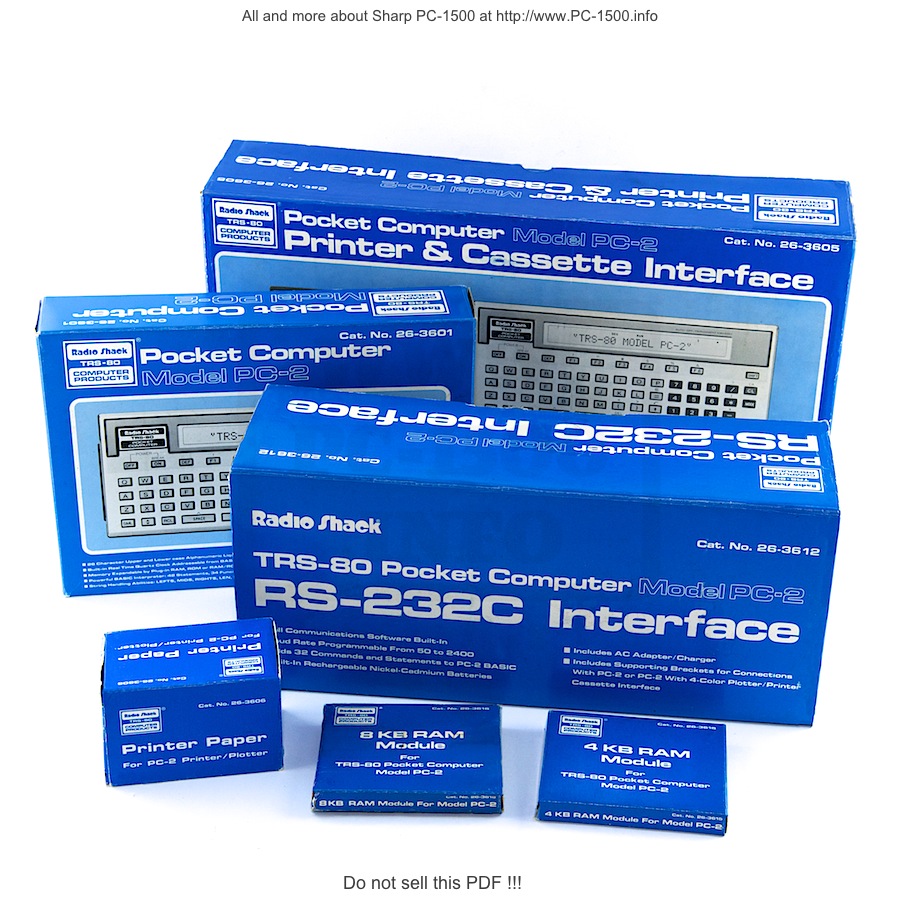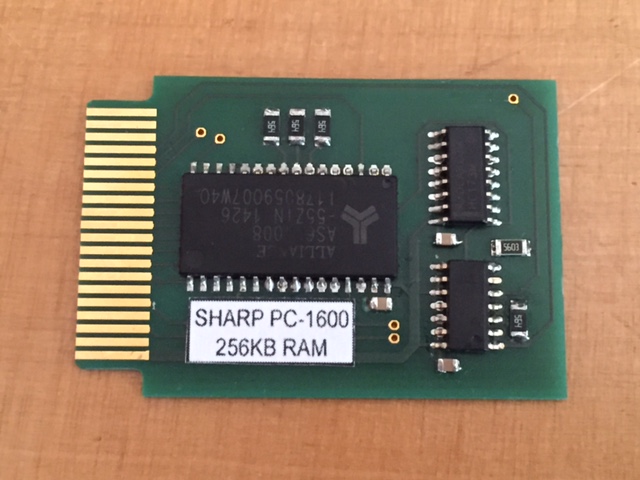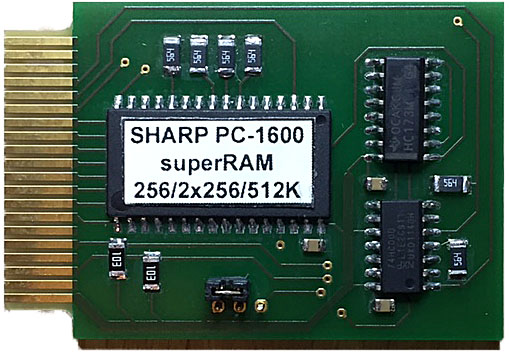Hi, after a long search the CE-150 from NANFENG is here !
It’s really the same as Sharp but with the NANFENG logo.
A real rarity !
Category Archives: Hardware
CE-165 : More informations (by Don Gregory)
Don Gregory is a PC-1500.info reader and contributor.
In february he sent me all the “Pocket Computer Newsletter” (I apologize, I’m very late to post it)
He contacted me after my last article and give us a lot more informations about the CE-165 :
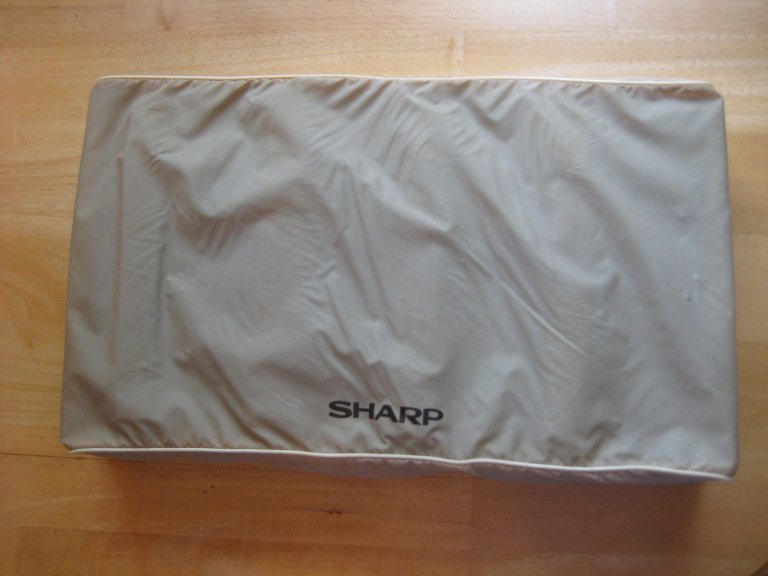
(CE-165 with it’s cover (c) Don Gregory)
Here is my CE-165 and a user guide I made as follows:
The CE-165 is a program writer for CE-160 memory modules.
Programs must first be written to a CE-155 8k module (not a CE-159).
DEF key labels should be used for your programs. Read a CE-160 manual.
Then the program can be transferred to the CE-160 module.
Up to 16 modules can be programmed at a time.Maximum byte size of the program for transferal:
BASIC program – 7808 bytes
Katakana in use – 6119 bytes
CE-153 in used – 6740 bytes
Katakana and CE-153 in use – 4941 bytes
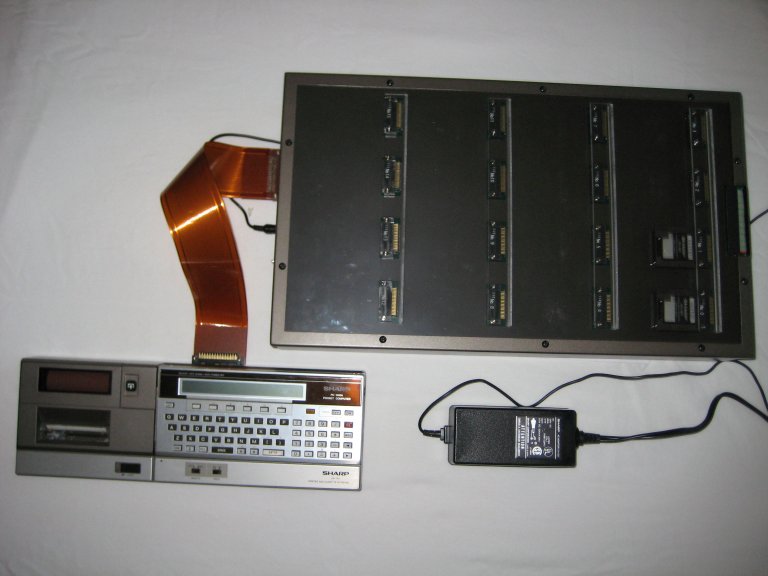
(CE-165 ready to program 2 modules (c) Don Gregory)
Procedure:
Connect the PC-1500 with CE-155 to a CE-150 printer.
Load your program and power off.
Connect to the CE-165 via a cable.
Connect the EA-150 power supply to the CE-165 then plug to a wall outlet.
Power on the CE-165 then power on the PC-1500.
CE-165 program Auto Runs.
Commands corresponding to the Function keys will appear on the screen.
If you press the Break key you can restart with Run command or press
Function Key 1.
Function Key 2 is a power down with no line feed at power up, like Auto
Power Off.Screen 1:
MODULE X UNITS: YES NOX will be the number of modules that are inserted and functioning.
If the number is correct press the Function Key under YES.
Program proceeds to Screen 2.If the number is incorrect press the function key under NO.
Screen will show sockets that are not active 0-1-2-3-4-5-6-7
Press Enter shows sockets not active 8-9-10-11-12-13-14-15
Any number not appearing is a good module ready to use.Screen 2:
ERASE WRITE VERIFYERASE – Screen displays ERASE START ******* changes to ERASE END ******
then powers off.WRITE – Screen displays PREVIOUS SETTINGS AVAILABLE ?? YES NO
NO will ask if you want to include the RESERVE AREA: YES NO
Then asks if CE-153? YES NO
Asks again to confirm CE-153 usage. YES NO
WRITE START ******
WRITE VERIFY ****** If VERIFY fails the socket number(s) is
displayed ERR: X
WRITE END ******** then powers offVERIFY – Screen displays SOURCE PROGRAM 1500 160
modules in the CE-165 can be verified with a CE-160 or a CE-155 in
the PC-1500.
RESERVE AREA? YES NO
CE-153? YES NO
Confirm CE-153 usage. YES NO
VERIFY START ********* If VERIFY fails the socket number(s) is
displayed ERR: X
VERIFY END ******** then powers offNote: If CE-153 is used and the NEW command was incorrect ERROR: NEW XXX
THIS VALUE IS WRONG is displayed.
Are you able to understand the meaning of it’s CE-165 serial number ?
It’s one of the firsts one produced.
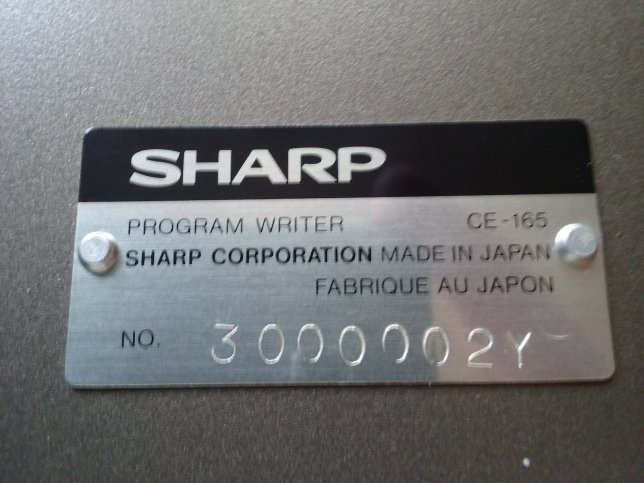
(My CE-165’s serial number (c) Don Gregory)
Thank you very much Don for this article !
We are happy to see a near mint, full functional, CE-165.
Treasure inside !
We all have to say a very big thanks to Heiko E. !!!
TE-1507 : Prototype updated
Hi, In my PC-1500 i had problems with the first TE-1507 version using Xicor memory.
It was impossible to write something in an unprotected X28HC256.
http://www.pc-1500.info/2015/07/30/te-1507-the-memory-module-for-developers/
The Team1560 needs were to have a big system RAM and a place to test system ROM extensions.
Done ! The TE-1507 is now working with 2 RAM ICs and the R/W protection is done by jumper.
Here are some pictures the prototype :
This one, number 3, is reserved for…….. ? Stay tuned 😉
The release version should be available in one month.
Happy birthday !!! The second candle !!!
Hi all my readers !
Two years ago when i started this website i didn’t imagine to find all these informations about the Sharp PC-1500.
Did you imagine that this little pocket computer was distributed all over the world ?
Under other brands like Hiradastechnika or Nanfeng ?
It’s always a pleasure when a reader contact me and tells me it’s story with the PC-1500.
But it’s very rare ! Who wants to share his experience and knowledge ? Send me some articles with pictures and i will publish it !
Do you have some old program tapes ? Do you want to teach machine language programming in a set of articles ?
Your English language writing will sure be better than mine ! lol
300 000 visits since last year… incredible ! Thank you !
I know that my visitors are from lot of countries, some close to me in France like the Silicium.org forum, some from the other side of the planet like Neil in Australia or Waon in China, Toplica in Russia… Thank you for following the SHARP PC-1500’s story.
My next big task will be to contact Sharp in Japan and to ask for their help.
They may have lot of documents to share with us and shipping a parcel with rare informations, schematics, books, pictures, peripherals (like CE-165), is not an excessive cost ? They may have a museum, isn’t ? My website is the PC-1500 museum 😉
Please, Sharp company, read this page http://www.pc-1500.info/donors/
Some of you are already generous donors and i thank you again and again !!!
Who can answer this question : Which is the last serial number signification ?
My suggestion is something like the factory or the target country…
Ok, it’s time to close this second year with a Graal : the Blue PC-1500 in the rare Japan case !
The Sharp CE-515P printers (Part II) : European/US version opening the box
The box don’t have the classic PC-1500 peripherals brown look.
It’s the for the next generation, the PC-1600, and have a nice blue color.
The parcel looks strong and the printer seems to be well protected.
The inside part is made of two blocs of polystyrene. The user manual is on the top.
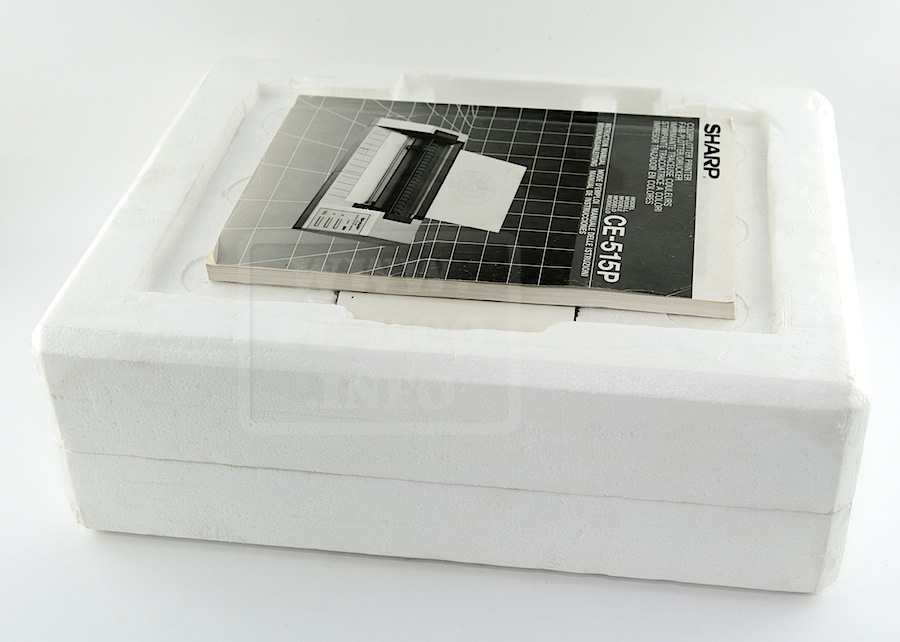
And on the top bloc we discover places for a paper roll and 3 pens sets. Nice idea !
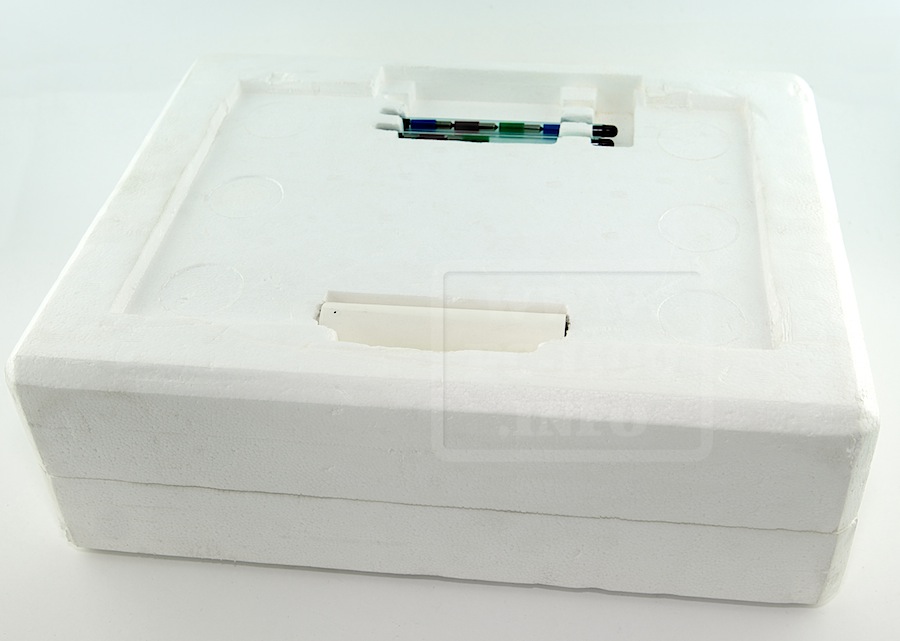
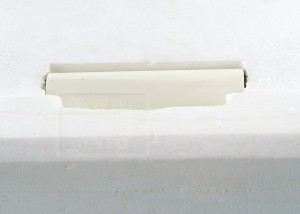
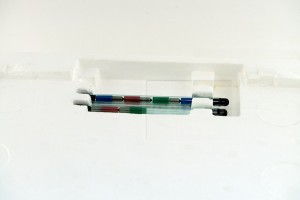
Removing the top bloc… and the big graphic color printer is here with it’s power adapter.
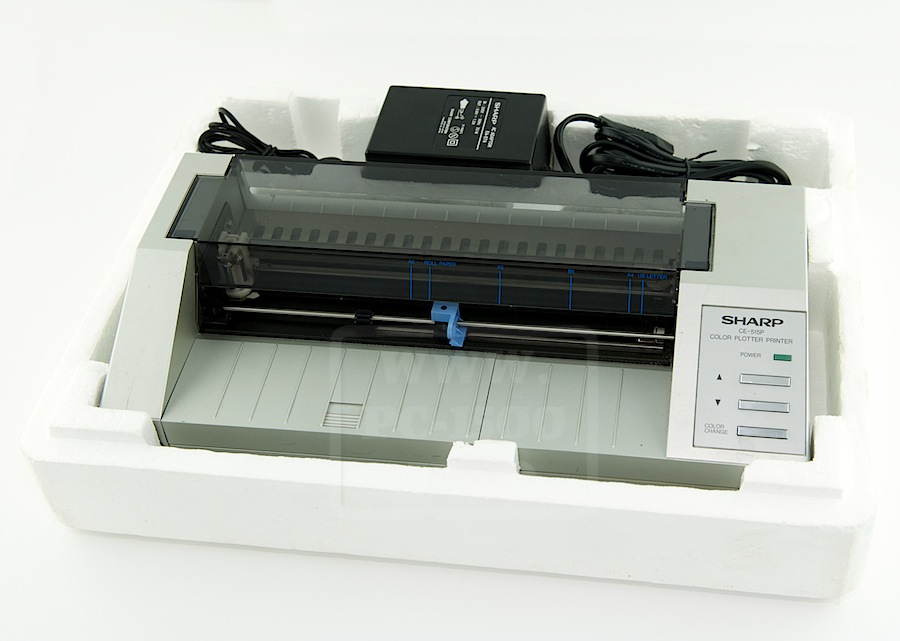
Here are all items included in the box… but the transparent cover is not on the picture.
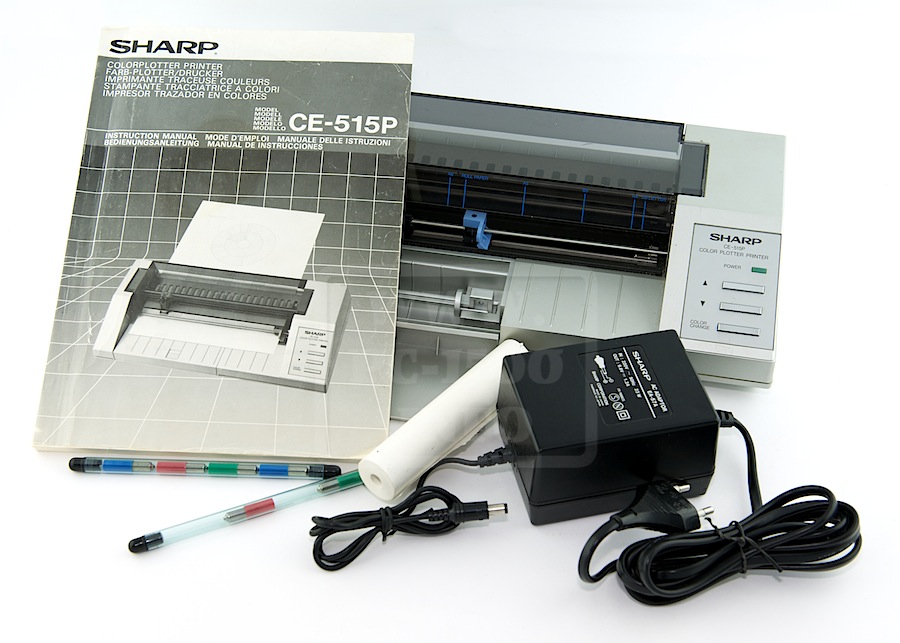
Next time we will open the printer 🙂
The Sharp CE-515P printers (Part I)
PC-1500’s industrial use from Spitezenberger Spies
Maybe some of you could explain us what this system is doing ?
The German company SPITZENBERGER was using the Sharp PC-1500A in one of their systems.
It seems to be an advanced signal recorder but i don’t have more informations than the pdf.
This document is restored from old papers.
I have contacted the company but never got any answer…
Tandy PC-2 : The full system in “blue box”
I know that some of you better prefer the PC-2 than the PC-1500.
The Tandy system count less peripherals then the Sharp but they have something special… beginning by their “Blue box”
The serial interface is the rarest “in box” item.
Does somebody know if the printer case (or bag) was delivered in a blue box ? I have no idea…
512KB Memory Expansion Module for SHARP PC-1600 by Tom
After my PC-1500 memory module which need some corrections, i’m very proud to present you this incredible 512KB memory module for the PC-1600 built by Tom.
The best thing to do is to let Tom explain it :
At the beginning of 2014 I rediscovered the fascination of the vintage SHARP pocket computers. My very first computer was indeed a PC-1500/CE-150 which I found somewhere deep down in my storage. And it was still working (except the rechargeable battery of course)!
In the 80s, when I was a boy, however the PC-1600/CE-1600P was a dream, but too expensive for me by magnitudes. So I was lucky to buy one from ebay. Since I’m a computer scientist, I was interested to treat that machine like an embedded system using a modern software dev environment and the sdcc/Z80 C-compiler. I succeeded, but soon noticed that the RAM-disk was too small, even on a 32KB+64KB config.
So I searched for custom vintage Tramsoft and Bajic 256KB modules, but couldn’t get one.
That was the point, when I decided to build my own. Luckily I found the homepage of Kai Bader, who kindly offered me one of his breakout boards and I started experimenting with SRAM ICs.
The hard part for me was to decode the PC-1600 vertical bank switch of slot 2, but finally I got my first 256KB RAM module in my hands.
Technical Data (rev 1 – sold out)
———————————
* 256KB RAM module with low power SRAM chip
* 32KB can optionally be reserved as a main memory extension, the rest is used as RAM-disk
* No battery bufferI send one to Kai and he posted it on his website. Allmost immediately I was contacted by Eric – the owner of this great site – who had some clever suggestions for technical improvements and organized a poll at the silicium.org enthusiasts forum for a revision 2 of the board.
Since my first version had a 512KB SRAM chip on board of which “only” 256KB was used, the main improvement was to provide a 2x256KB mode and a 512KB mode.
It was clear soon that the 512KB harware mode was not supported by the PC-1600 INIT-command, but after some fiddling about I managed to write a patch routine that overcomes this problem.
And that was the birth of the first 512KB RAM module for the SHARP PC-1600.
Technical Data (rev 2 – sold out)
———————————
* as rev 1 but 3 modes of operation:
– 256KB mode, without need of any additional init software or peeks/pokes
– 2x256KB mode, with two banks 256KB each – to be switched by an additional hardware switch
– 512KB mode, needs an additional custom patch routine to get that mode running
* Battery buffer not included, but a description for mod available.For more details see
http://www.silicium.org/forum/viewtopic.php?f=24&t=38729&start=84Technical Data (rev 3 – planned)
——————————–
* as rev 2 but with (better) battery buffer support incorporatedThanx again Eric for your support and this very informative and entertaining site.
Thank you Tom for this module !
My friends from Silicium and me are happy with our 512KB PC-1600 🙂


